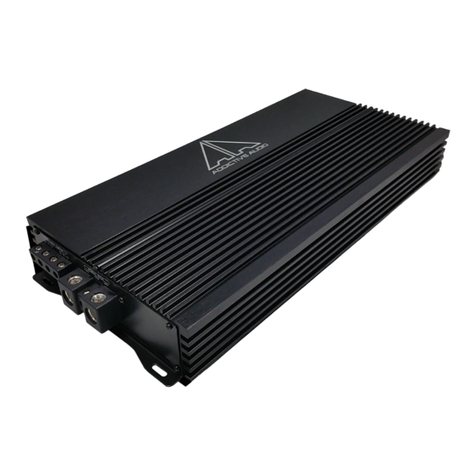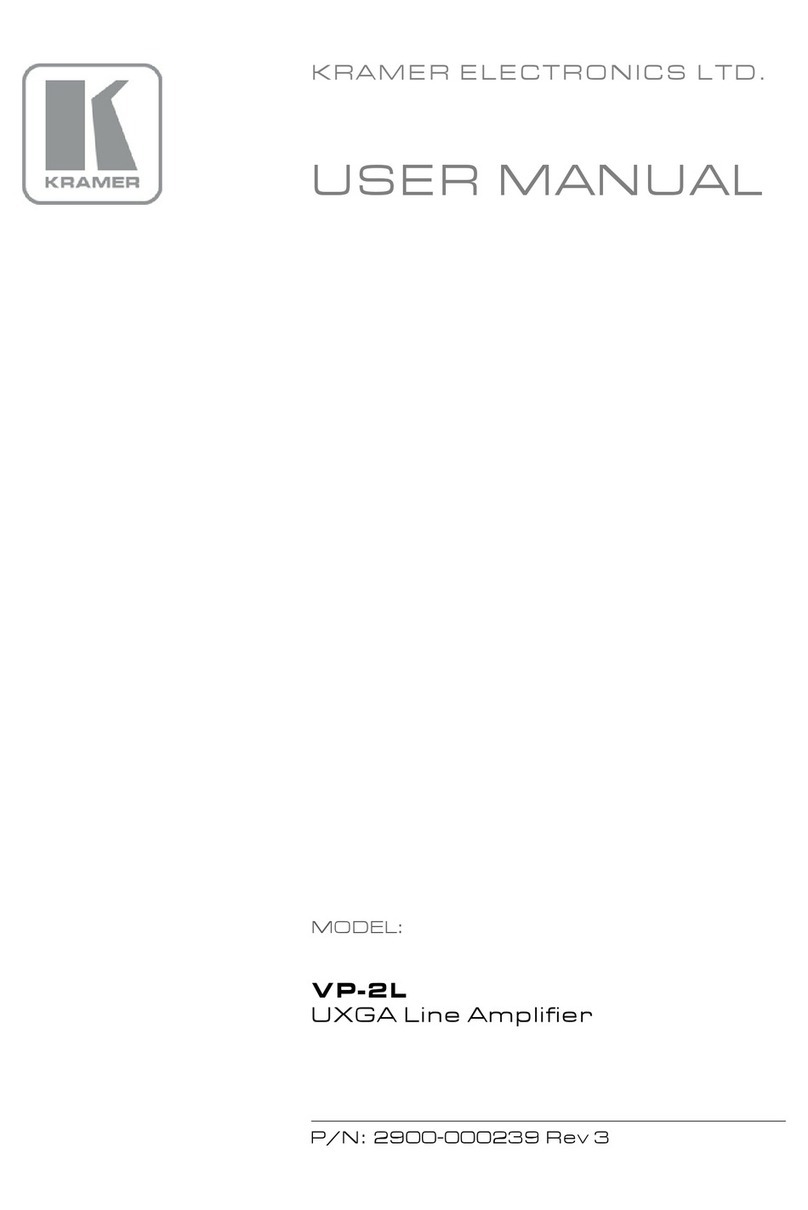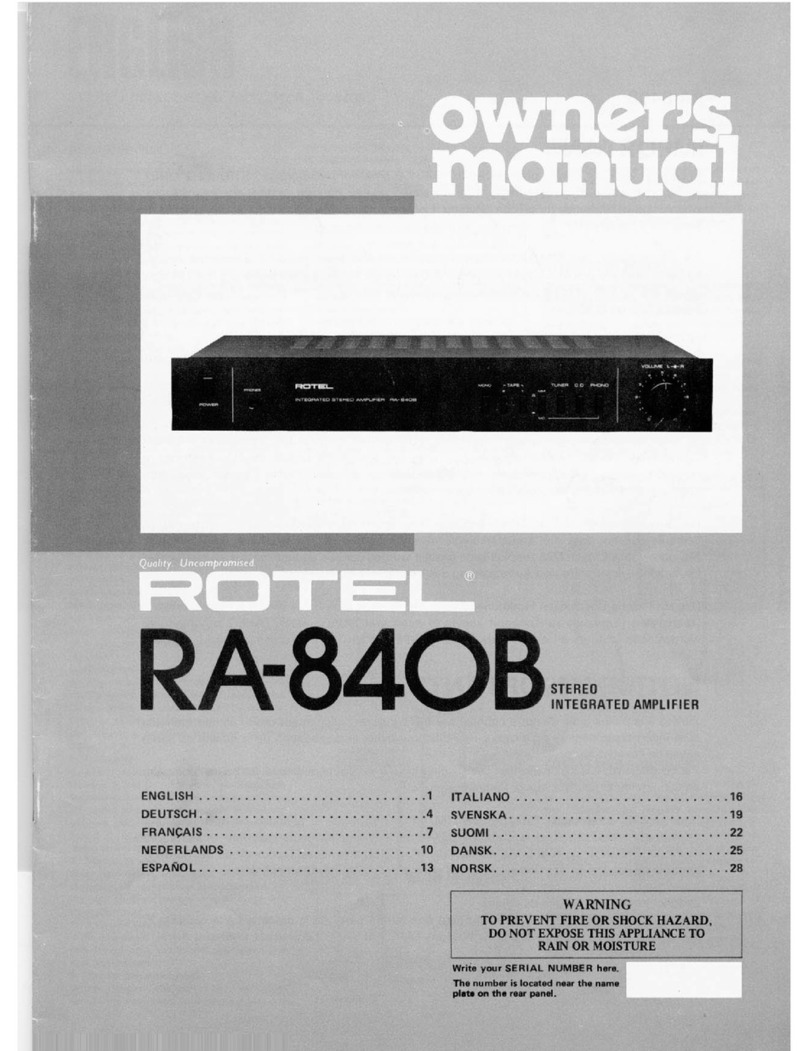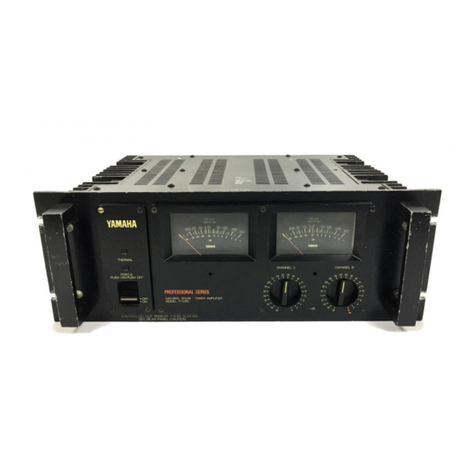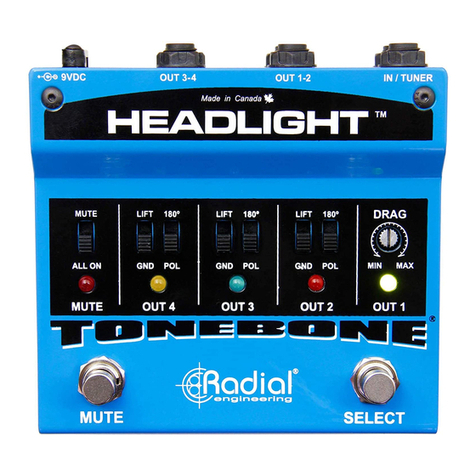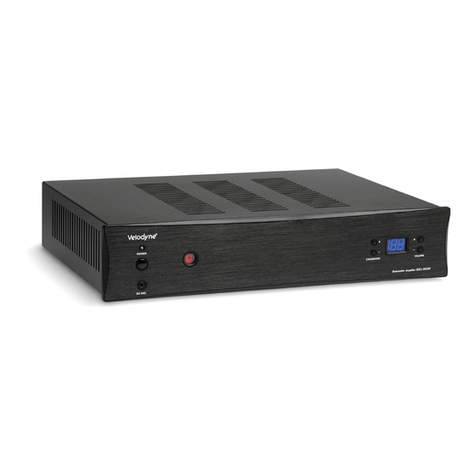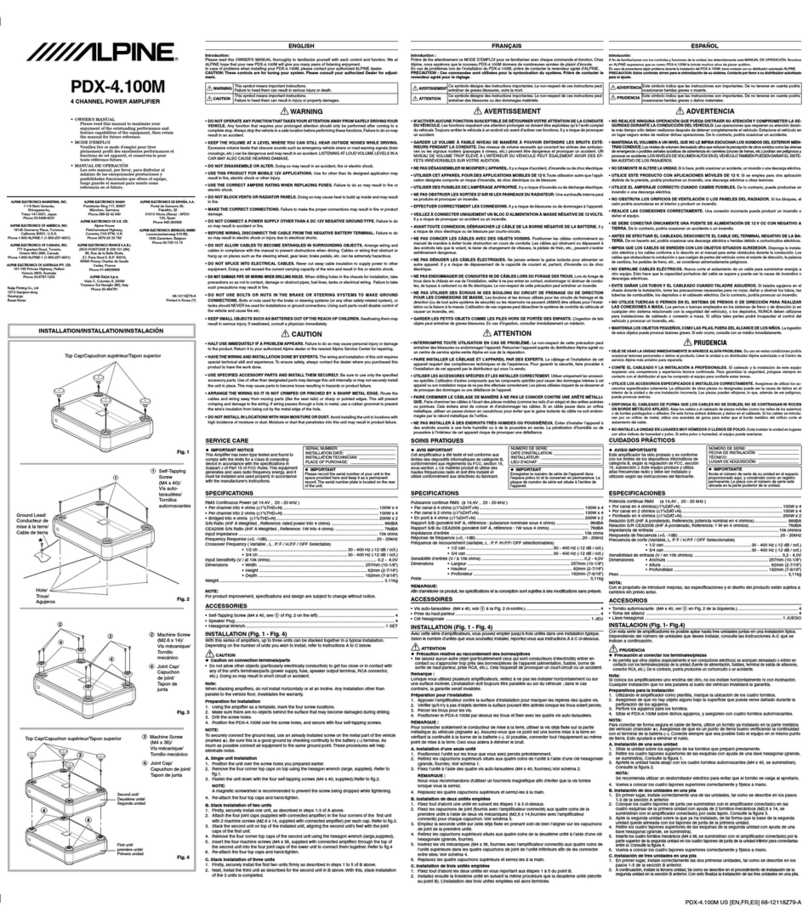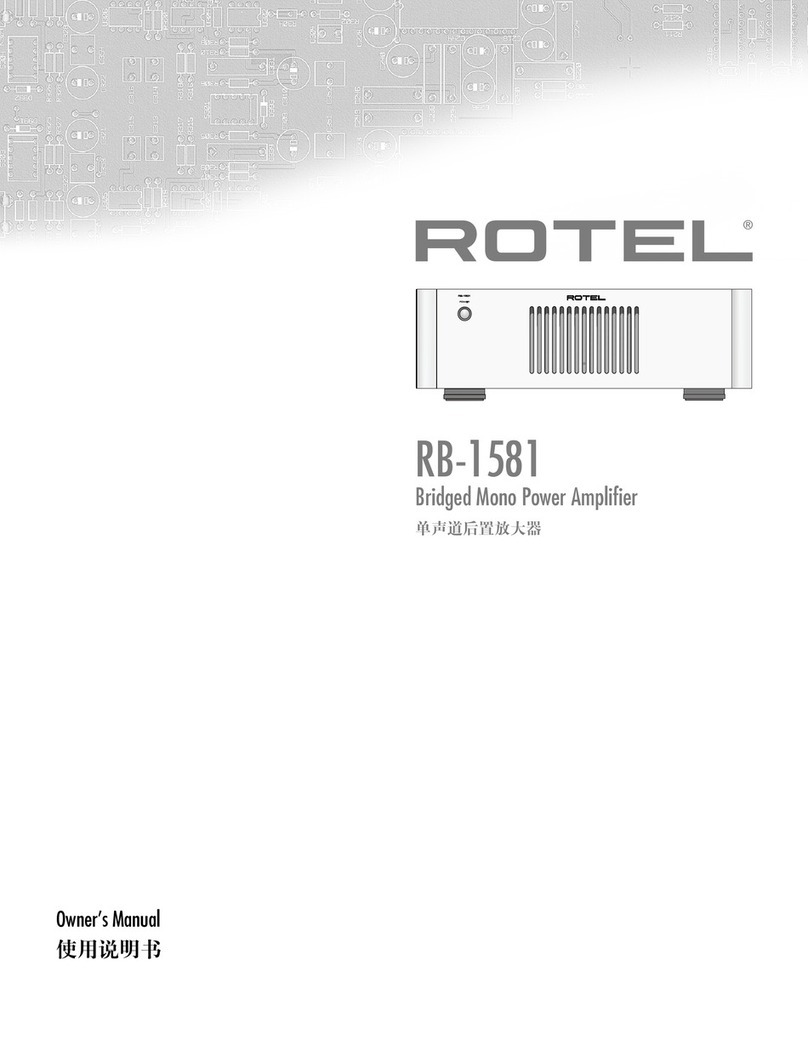Addictive audio BOOST Series Quick start guide

1

Specifications
B250.4 (13.8V) STEREO BRIDGED
Signal to Noise Ratio 101dB
High Efficiency 77% THD:
0.1%
Lowest Recommended Load:
4ohm Stereo
65x4 watts RMS @ 4ohm
Do Not Operate at 2ohm or
1ohm Stereo
135x2 watts RMS @ 4ohm
Do Not Operate at 2ohm or
1ohm Bridged
B450.1 (13.8V) STEREO BRIDGED
Signal to Noise Ratio 104dB
High Efficiency 79%
THD: 0.05%
Lowest Recommended Load:
2ohm Mono
N/A
225x1 watts RMS @ 4ohm
450x1 watts RMS @ 2ohm
Do Not Operate at 1ohm
_______________________________________________________
Common Design Features
Heavy Duty Copper Trace PCB Board
Direct Cable Connection for Superior Conductivity
Phase Adjustment
Heavy Duty Aluminum Heatsink for Max. Heat Dissipation
Input Sensitivity: 220mV – 6.6Vrms
Engineered in the U.S.A.
B250.4 Design Features
Bass Boost from 0 to +18dB (45Hz)
Low Pass Filter: 40 – 400Hz (-12dB/Octave)
High Pass Filter: 40 – 400Hz (-12dB/Octave)
B450.1 Design Features
Remote Gain Control
Bass Boost from 0 to +18dB (45Hz)
Low Pass Filter: 50 – 300Hz (-12dB or -24dB/Octave)
Subsonic Filter: 15 – 60Hz (24dB/Octave)
Frequency Response -3dB 15Hz – 238Hz
Class D High Efficiency Design
Auto-Start High-Level Signal Input and Remote Turn On
2

CONGRATULATIONS!
Selecting fine audio equipment, such as the Addictive Audio amplifier you
have just purchased, is only the beginning of your musical enjoyment. Now is the
time to consider how to maximize the fun and excitement your equipment has to
offer. We at Addictive Audio want you to get the most out of your equipment by
playing it at a safe level, a level that lets the sound come through loud and clear
without annoying blaring distortion; most importantly, without affecting your
sensitive hearing.
Sound can be deceiving over time your hearing “comfort level” adapts to
higher volumes of sound, what may have sounded “normal” can actually be too
loud and harmful to your hearing.
Prevent this by setting your equipment at a safe level BEFORE your
hearing adapts.
To establish the “safe level”.
• Start your volume control at a low setting.
• Slowly increase the sound until you can hear it comfortably and clearly, and
without distortion.
• Once you have established a comfortable “sound level” make a note of this
position and do not go above this setting.
Taking a minute to do this will help to prevent hearing damage in the future.
After all, we want you listening for a lifetime.
Introduction
Your Addictive Audio amplifier has been designed to give you very high
performance, and valuable features, at an exceptional value. Take the time to read
over this brief set of instructions, and you will get full enjoyment from your system.
Installation
The quality of the installation will affect system performance and reliability. You
may wish to contact a dealer or professional installer. The amplifier is generally
mounted in the rear trunk area but can be mounted in any convenient area such as
beneath a seat. Please be sure to locate this unit where you have reasonable air
circulation and protection from any moisture.
When considering the mounting location you should minimize the length of the
power supply and speaker leads. Minimizing both leads will provide higher audio
output from the system. It is important to ensure that the heat sink is not against a
panel or a surface preventing air circulation. Mark the location for the mounting
screw holes by using the amplifier as a template. Drill #29 or 9/64” diameter holes
at the marked locations and firmly fasten the amplifier in place with the mounting
screws supplied in the accessory kit.
3

Caution
Before drilling or cutting any holes investigate the layout of your automobile thoroughly!
Take care when working near the gas lines, hydraulic lines and electrical wiring.
WARNING
This power amplifier has a protection feature to prevent any damage from misuse
or faulty conditions - excessive heat, short circuit speakers or overload. If the unit
senses one of the above conditions, the protection indicator will light and the
system will shut down. To diagnose the problem turn all levels down, all power off
and check the installation for possible wiring mistakes or shorts. In the event the
amplifier shuts down due to excessive heat under adverse conditions simply allow
time for the unit to cool down at which time, the protection indicator will not light.
Power Supply Connections
The +12VDC and GROUND wires should be heavy gauge copper wire with heavy
insulation and of the same gauge. Please see the chart below for recommended
gauge and fuse.
B250.4 40 AMP FUSE 8-4 GAUGE
B450.1 60 AMP FUSE 4 GAUGE
In addition, it has a 12V remote control wire and it should be 14AWG-18AWG.
+12V Power (+12V)
Firstly, use good quality USA spec OFC wire. If using a low quality/strand count
wire, be prepared to increase gauge size accordingly. This wire is usually
connected directly to the positive battery terminal. Be sure to use proper fuse as
rated above within 16 inches of the main battery. (Refer to Fig. 1)
Ground (GND) Same gauge as +12V and no longer than 36”
This connection must be completed using an “O” ring (to prevent coming loose)
with insulating sleeve. This wire is the electrical ground and must be fastened
securely to the vehicle chassis. The best method is to use threading sheet metal
screw(s) since the threads cut into bare metal. Ensure that all paint coating or
4

other insulation is removed from around the ground area. Use as short of a piece
of cable as possible – Again, use the same gauge as the +12V. (Refer to Fig. 1)
Remote (REM)
Many source units (cd player) or other music sources have an output terminal for
connection of the remote turn-on of the power amplifier. If the source unit doesn’t
have a remote turn-on feature, then you can connect the remote wire to a switch
that derives power from an ignition switched circuit. (Refer to Fig. 1)
Power Input Connections
Caution
First make +12V wire connection then the ground connection and finally the
remote connection. Furthermore the +12V wire must always be fused at the
battery for protection against possible damage. If you need to replace the power
fuse, replace it with a fuse of the same value. Using a fuse of a different type or
rating may result in a serious hazard.
Fig. 1
Signal Input (RCA)
Addictive Audio amplifiers have RCA connection type input terminal for low level
input. A standard pair of RCA type cables can be used for all models (Refer to Fig.
2). The amplifiers allow both stereo and mono input. The amplifier internally will
take a stereo signal and convert to a mono signal. If using the low level output of
one amplifier to provide signal to a stereo amplifier, you must input stereo signal to
the amplifier providing signal to secondary amplifier. If mono input to initial
amplifier is made the output to stereo (secondary) amplifier will also be mono.
Adjustment of input level is accomplished by the gain control. Adjusting this
control allows the amplifier gain to be controlled to match the source unit.
Signal Input (High-Level) B450.1
Addictive Audio B450.1 Boost Series amplifier has High-Level inputs as an input
signal option. When High-Level inputs are used the Auto-Start feature can also be
5

activated. This feature will allow for the amplifier to “turn-on” without having to use
a remote (REM) turn on wire.
Signal Input Connections
More information can be found under Features and Controls.
Speaker Output Connections
It is important to understand and know the impedance of the subwoofers that will
be connected to the amplifier. Incorrect wiring or too low of an impedance will
cause damage to the amplifier. If you do not know the impedance of your
subwoofers use a digital multi meter to measure the resistance. If you do not have
a DMM, please visit an Authorized Retailer for assistance. All Addictive Audio
subwoofers have the coil impedance on the back plate sticker found on the bottom
of the subwoofer for easy identification.
B450.1
Single 4 ohm coils: DO NOT Connect more than two (2) woofers to the B450.1
Single 2 ohm coils: DO NOT Connect more than one (1) woofer to the B450.1
Dual Voice Coil Subwoofers Refer to Fig. 3
B250.4
DO NOT Operate B250.4 at 2 ohm stereo – ONLY 4 ohm Stable.
Refer to Fig. 3b
6

7

Features and Controls B450.1 / B250.4 (Fig.4)
1. RCA Line Output Jacks
Allows signal to pass through to another amplifier.
2. RCA Line Input Jacks
Input signal from source unit through RCA cable.
3. Remote Gain Control
This allows an external bass knob (included) to adjust the subwoofer from
a more convenient location in the vehicle or in the event the stock head
unit is being used. Most aftermarket mid to high-end head units already
offer subwoofer adjustment. However, the bass knob can still be used,
but is not necessary.
4. High-Level Inputs
Allows for high level inputs in place of RCA cables. See also #7 “Auto-
Start” remote turn on feature.
8

5. Input Gain/Level Control *NOT A VOLUME KNOB*
This allows for the adjustment of the gain of both channels to match the
output level of the source unit. In addition, it allows adjustment from 0.2V
to 6.0V.
6. Subsonic Filter
Control the high pass crossover point for the speaker outputs to eliminate
ultra low frequencies. This crossover is always on with a -12dB per octave
slope and adjustable from 15-60Hz. This filter is used mainly in ported
applications, to protect the subwoofers from excessive excursion below
the port tuned frequency. Not necessary when dealing with sealed
enclosures, but can still be used to help protect the subwoofer system.
7. Auto-Start
When using high-level inputs turn this feature to “Auto-Start High-Level”
and the amplifier will turn on via signal sense rather than having to install a remote
(REM) turn on wire. If installing RCA input cables, turn this feature to “Head Unit
Remote” and install remote turn on cable to the REM input.
8. Bass Boost
This allows the ability to Boost low frequency response (45Hz) up to +18dB.
9. Low Pass Filter
This controls the low pass crossover point for the speaker outputs. This
crossover, when selected, will attenuate the frequencies above the
crossover point with an adjustable slope of -12dB or -24dB per octave
(See #10) The crossover point is adjustable from 50-300Hz. This filter
reduces unwanted upper frequencies from being played through the
subwoofer(s).
10. Low Pass Slope
Choose between -12dB or -24dB per octave slope for the Low Pass circuit.
The steeper the slope (higher the number) the quicker the notes
above/below the set point of #9 above fade away.
9

11. 0-180 Degree Phase Alignment
Allows for the time correction of music signals to prevent phasing
cancellation or music blurring.
12. Power / Protection LED
POWER LED: Will illuminate GREEN when +12VDC is applied to both the remote turn on
and +12V input from the battery and a solid ground has been made. The input
from the battery to the amplifier can be more than 12VDC.
PROTECTION: Will illuminate RED when any one of the following occurs:
Short Circuit (Immediately)
Reverse Voltage (Immediately)
Thermal (On at 141*F or 60*C)
Low Voltage (On at 9VDC)
High Voltage (On at 18VDC)
13. Variable Crossover Control
Adjust both the HPF and LPF crossover frequencies between 40-400Hz
based upon which MODE is chosen in #14 below.
14. MODE
HPF: Set the MODE SWITCH to the HPF position when the amplifier is used to drive a
tweeter/midrange system. The frequencies below the crossover point will be
attenuated at -12dB/octave slope. Adjust the crossover frequency by rotating #13
above knob to the desired frequency ranging from 40-400Hz.
LPF: Set the MODE SWITCH to the LPF position when the amplifier is used to drive a
subwoofer system. The frequencies above the crossover point will be attenuated
at -12dB/octave. Adjust the crossover frequency by rotating #13 above knob to the
desired frequency ranging from 40-400Hz.
FLAT: Set the MODE SWITCH to the FLAT position when the amplifier is used to drive full-
range speakers and/or components that come with their own crossover. The full
frequency bandwidth will be output to the speakers without high or low frequency
attenuation.
15. Rear RCA Line Input Jacks
Input signal from source unit through RCA cable for the rear channels.
10

Adjusting the Amplifier
1. Disconnect the negative battery post and secure it to something so
accidental re-connection does not occur during the installation process.
2. Run all wires needed for the amplifier to work correctly. Do not attach the
fuse in the fuse holder by the battery until all wires have been plugged into
the amplifier.
3. Turn the amplifiers gain and boost all the way down (counter clockwise).
4. As a good “starting point” set low pass filter to 80Hz (7 clicks), set the
subsonic to the tuning frequency of your enclosure (refer to EASY CLICK chart
on pg.13 for exact tuning), and set the phase to 0.
5. Make sure Bass EQ switch is set to OFF and the Strap Mode switch is set
to MAS.
6. If using the supplied Remote Gain Control (Bass knob) turn the dial all the
way up to the max. (full clockwise)
7. Attach the recommended fuse (refer to fuse chart on pg.4) to the fuse holder by
the main battery.
8. Re-attach the negative battery post from step 1.
9. Turn the head unit on and start at a low volume. Check amplifier to make
sure all wires are correct and no protection lights are on.
10. Set the head unit’s tone controls, balance, and fader to the center or flat
position. Be sure to turn off any loudness or other signal processors.
11. Use a very clear original recording not mp3 or burned cd. Turn the volume
of the head unit to its maximum undistorted volume. On most quality head
units this is around 7/8 of the maximum volume.
12. Slowly turn up the gain (clockwise) to match the voltage output of the head
unit or until the speakers reach the maximum undistorted output. Keep an
eye on the clipping LED!
13. Re-adjust the low pass filter and phase if needed.
11

14. Turn the Bass EQ “ON” if desired. Now set the center point frequency
(refer to EASY CLICK chart on pg. 13 for exact tuning) and adjust the BOOST
accordingly. Keep an eye on the clipping LED!
15. If you have installed the Bass Knob, now you can use it effectively and
safely.
16. Play a few different selections of music to check for overall system
balance.
17. ENJOY!
12

13

NOTES
Many vehicles have small and insufficient wire to connect the alternator’s positive
connection to the battery and to ground the battery to the vehicle chassis. To prevent
voltage drops, these wires should be upgraded to 4-0 AWG when installing one or more
Addictive Audio amplifiers.
____________________________________________________
____________________________________________________
____________________________________________________
____________________________________________________
____________________________________________________
____________________________________________________
____________________________________________________
____________________________________________________
____________________________________________________
____________________________________________________
____________________________________________________
____________________________________________________
____________________________________________________
____________________________________________________
____________________________________________________
____________________________________________________
____________________________________________________
____________________________________________________
____________________________________________________
____________________________________________________
____________________________________________________
____________________________________________________
____________________________________________________
____________________________________________________
14

LIKE US ON FACEBOOK AND STAY UP TO DATE ON NEW
PRODUCTS, PROTOTYPES, RELEASE DATES, BUILD PICTURES
AND MORE.
www.facebook.com/AddictiveAudioInc
FOLLOW US ON INSTAGRAM AND GET IMMEDIATE UPDATE
PICTURES AND VIDEOS.
#addictiveaudio
#kromeaudio
#vitalpower
www.instagram.com/AddictiveAudioInc
WATCH THE LATEST AND GREATEST VIDEOS OF ADDICTIVE
AUDIO, KROME AUDIO AND VITAL POWER PRODUCTS!
www.youtube.com/AddictiveAudioInc
15
This manual suits for next models
2
Table of contents
Other Addictive audio Amplifier manuals
Popular Amplifier manuals by other brands
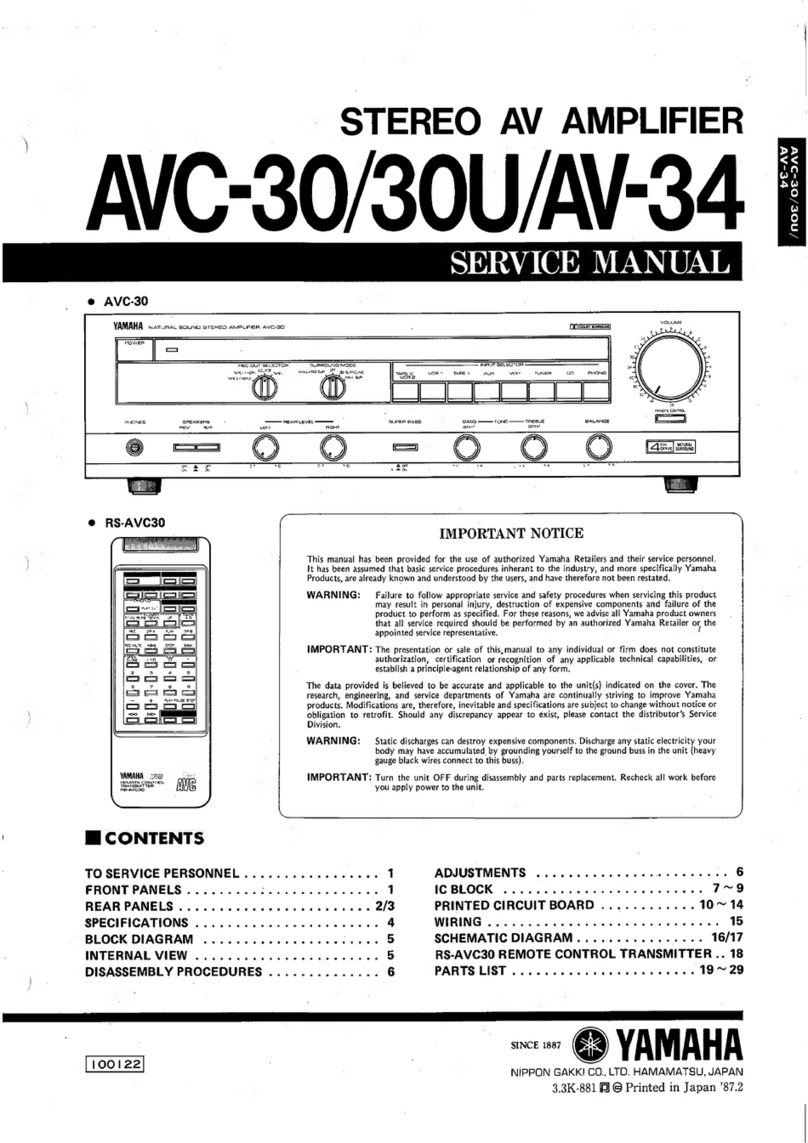
Yamaha
Yamaha ANC-30 Service manual
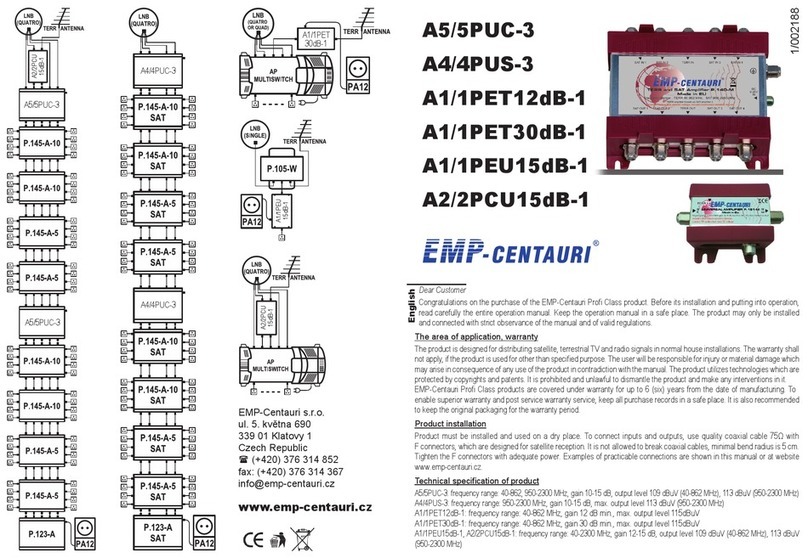
EMP-Centauri
EMP-Centauri A5/5PUC-3 quick start guide
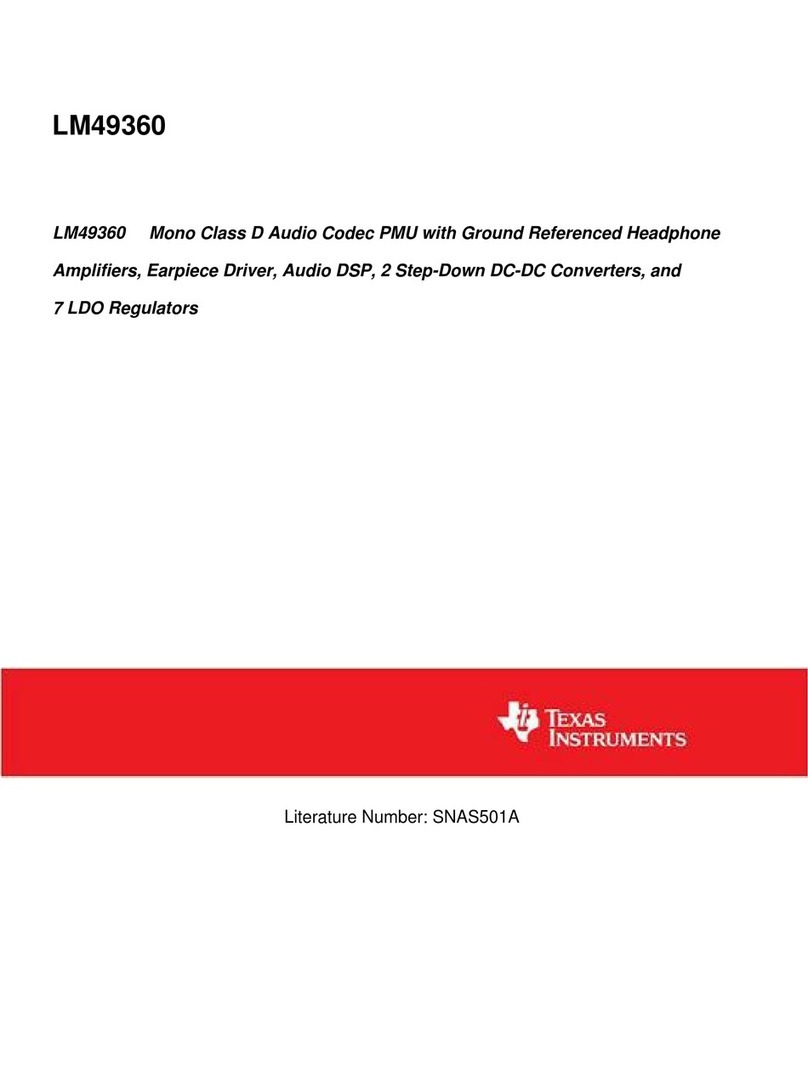
Texas Instruments
Texas Instruments Boomer LM49360 user manual
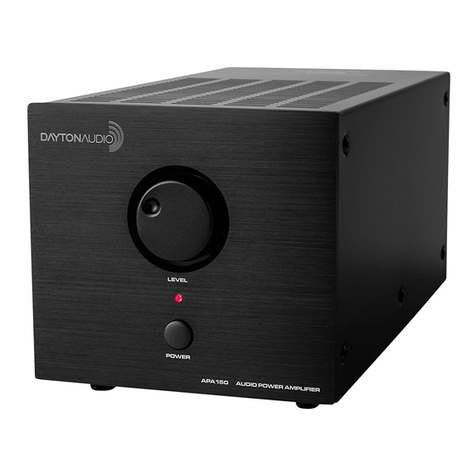
DaytonAudio
DaytonAudio APA150 user manual
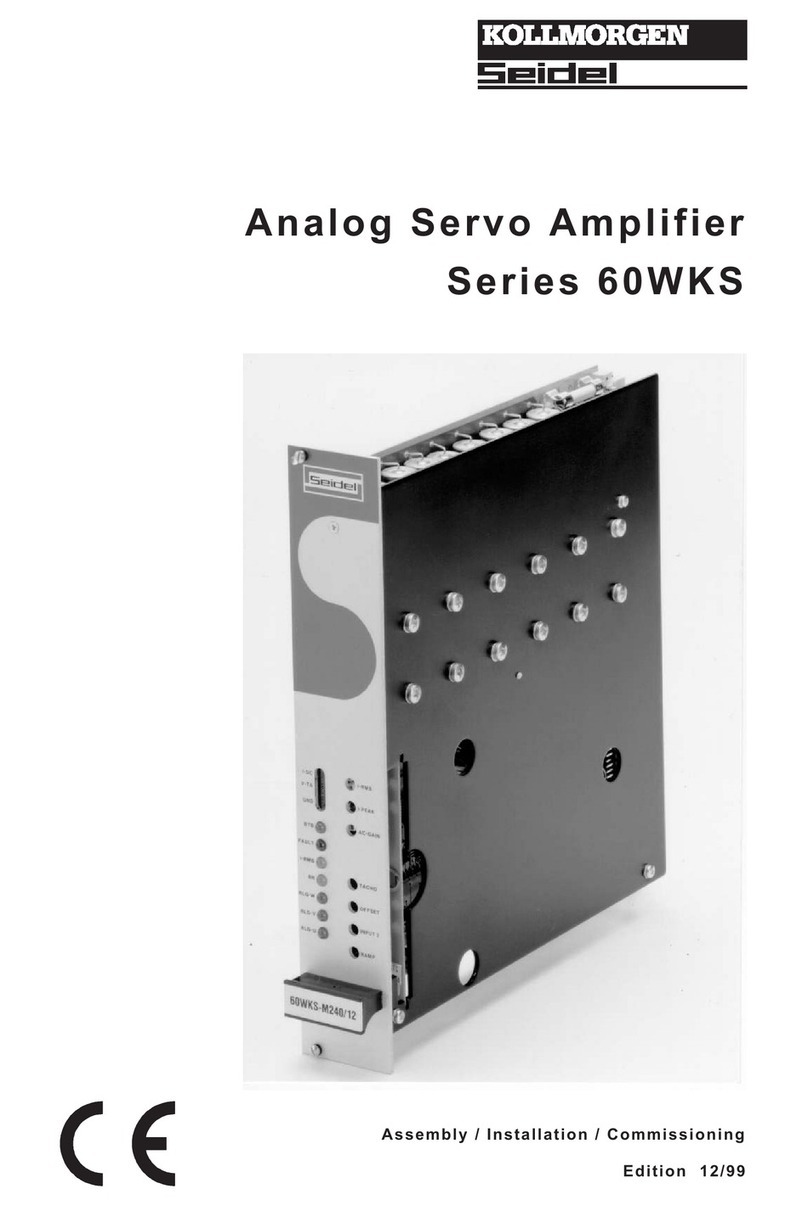
Kollmorgen Seidel
Kollmorgen Seidel 60WKS Series Assembly/Installation/Commissioning
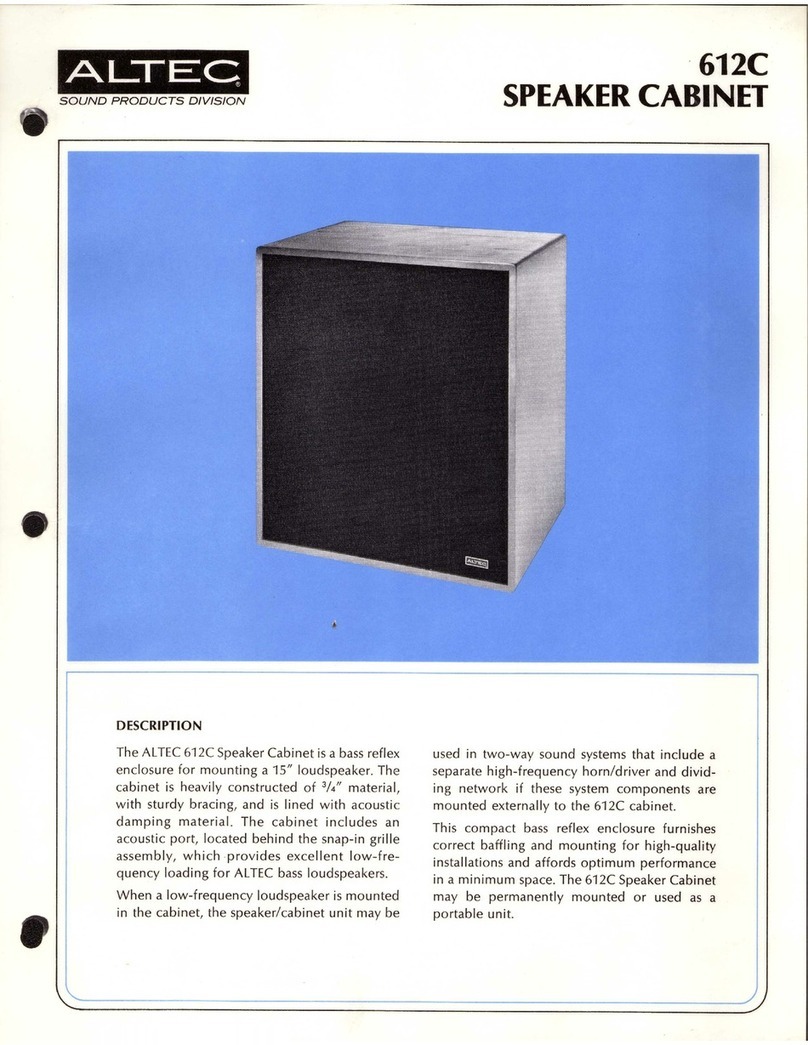
Altec
Altec 612C SPEAKER CABINET manual

